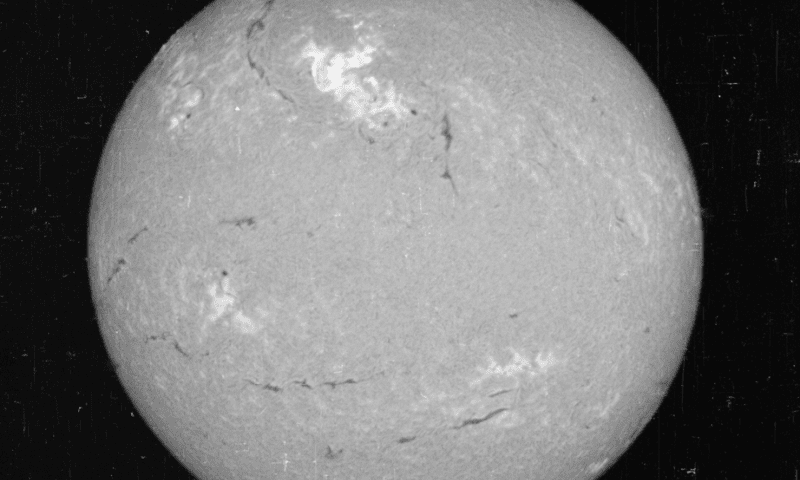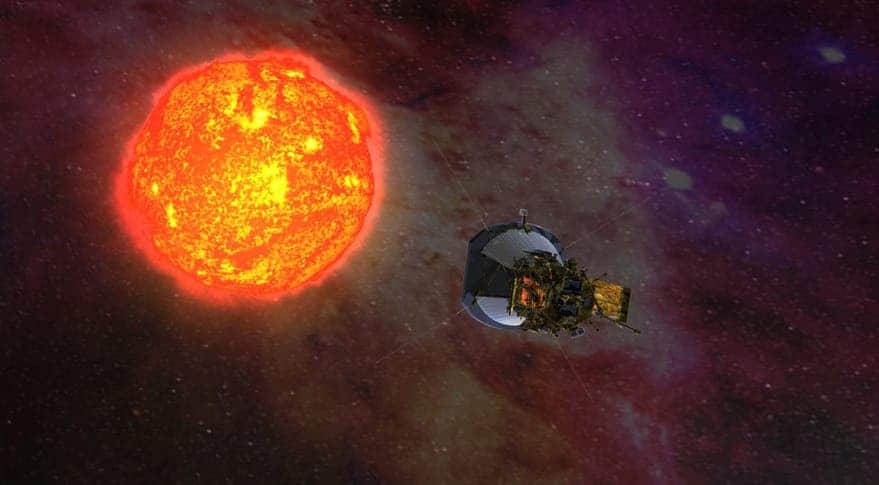
It’s the morning of May 23, 1967, and it’s the height of the Cold War. Suddenly, radar stations in the Arctic that were supposed to be on the lookout 24/7 for Soviet inter-ballistic missiles became jammed. Hours earlier, the sun spewed a massive solar flare, which once it hit Earth’s atmosphere created a geomagnetic storm that muted the radar. But solar science was still in its infancy around this time, so the Air Force naturally believed the Soviets were responsible and were potentially preparing a nuclear strike (who got to be the first was a constant source of paranoia for both superpowers during the Cold War). Aircraft loaded with nuclear warheads were quickly ordered to prepare to join the other bombers who were constantly in the air at an arm’s reach from the Soviet Union.
Nuclear war and potentially worldwide total annihilation hinged on a thin thread — and all because the sun had a bad day.
We’re still alive, though
Because of science. Better said, because of a group of pioneering scientists like Retired Colonel Arnold L. Snyder who was on duty that day at NORAD’s Solar Forecast Center.
NORAD had started to receive data about the sun’s activity on a daily basis only a couple of years prior. But though still a fledgling science, solar observations using ground-based telescopes were pretty reliable and scientists had already amassed enough data to understand how capricious the sun can be and what it can do to electronic communications.
On May 18, 1967, scientists spotted an unusually large group of sun spots. Five days later, forecasters saw the sun became very active and knew a big flare was imminent. According to a bulletin released by NORAD’s Solar Forecast Center in Colorado Springs on May 23, a geomagnetic storm was supposed to occur in the following 36 to 48 hours. Pretty spot on.
That same day, all three Ballistic Missile Early Warning System (BMEWS) sites in the far Northern Hemisphere were jammed. Not long after NORAD called Snyder thinking, hoping he might have news about a natural electromagnetic interference.
“I specifically recall responding with excitement, ‘Yes, half the sun has blown away,’ and then related the event details in a calmer, more quantitative way,” Snyder said.
NORAD quickly contacted the U.S. Air Force which was on the highest alert possible. Together, they pieced together what they knew so far: 1) that the radar stations were in clear sight of the solar flare, 2) the science of electromagnetic interference, 3) jamming waned in concert with decreased solar radio emissions.
Eventually, the Air Force was put off alert and no additional planes put in the sky — something that would have certainly alarmed the Russians. Many days later, it was clear that the sun was having a field day. U.S. radio communications were disrupted for almost a week, and the beautiful Northern Lights, typically a spectacle which only eyes in the Arctic can enjoy, were visible as far South as New Mexico!

Credit: ESSA/NOAA.
This amazing story was kept secret for almost 50 years, and only recently made public by Retired Air Force officers in a new paper published in the journal Space Weather.
“This is a grave situation,” said Delores Knipp, a space physicist at the University of Colorado in Boulder and lead author of the new study. “But here’s where the story turns: things were going horribly wrong, and then something goes commendably right.”
“Had it not been for the fact that we had invested very early on in solar and geomagnetic storm observations and forecasting, the impact [of the storm] likely would have been much greater,” Knipp said. “This was a lesson learned in how important it is to be prepared.”

![An artist's conception of HD 209458 b, an exoplanet whose atmosphere is being torn off at more than 35,000 km/hour by the radiation of its close-by parent star. This hot Jupiter was the first alien world discovered via the transit method, and the first planet to have its atmosphere studied. [NASA/European Space Agency/Alfred Vidal-Madjar (Institut d'Astrophysique de Paris, CNRS)]](https://cdn.zmescience.com/wp-content/uploads/2020/11/247271_web-1-350x250.jpg)




